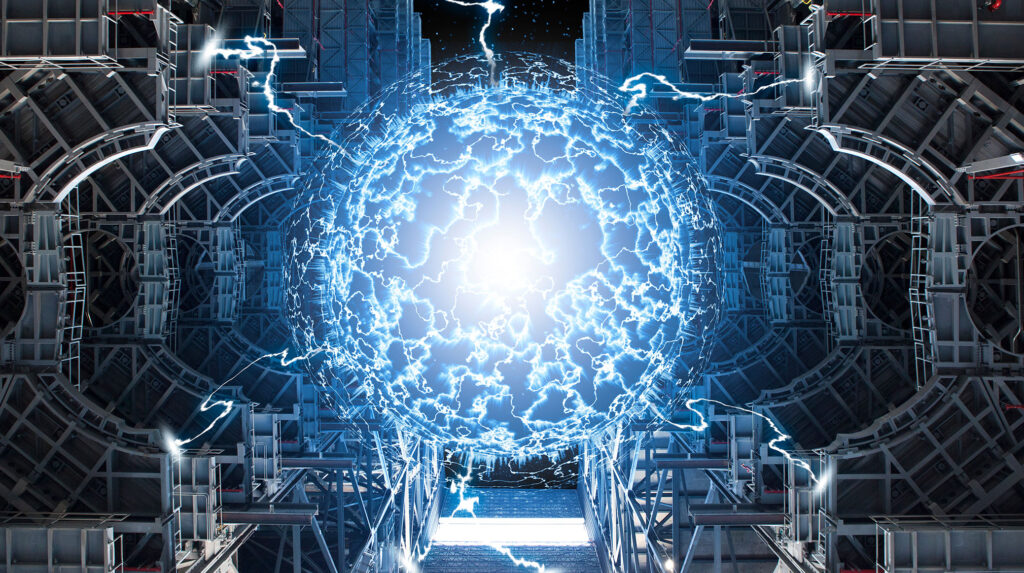Fusion Startups Energizing Race for Clean Power
• 3 min read
- Brief: Alternative Investments

Get the latest in Research & Insights
Sign up to receive a weekly email summary of new articles posted to AMG Research & Insights.

Fusion energy holds the promise of supplying clean, limitless energy by harnessing the power of the stars. For the past 60 years, this promise has seemed light years away.
Finally, that might be changing as dozens of venture-backed companies join the quest.
What is fusion?
As opposed to fission, which is how all commercial nuclear energy today is produced, fusion doesn’t carry the same risk or safety concerns. Fission takes nature’s largest atoms (like uranium) and splits them apart into two smaller atoms, releasing energy. The two smaller atoms have less mass than the whole; the difference is the released energy. Remember Einstein’s equation E = mc2? This shows that energy equals mass (multiplied by a constant). Fusion, on the other hand takes nature’s lightest atoms (typically hydrogen) and pushes them together into one heavier atom (typically helium); releasing a tremendous amount of energy in the process.
With fusion there is no chance of runaway reactions, no significant radioactive waste or risk. Hydrogen is abundant on earth; one glass of water could foster enough fusion reactions to generate the amount of energy consumed by one person for a lifetime.
Today, there are operational fusion reactors capable of producing power equivalent to a typical power plant. The catch is that these reactors require more energy to run than they generate. That relationship is known as the energy-gain factor, also known as “Q”, and the challenge for fusion developers is to generate energy output that exceeds the energy input or Q>1.
Why now?
Fusion research has been largely sitting in national labs and academia since inception, but venture funding and commercialization have spurred rapid proliferation and development. Today, more than 30 private fusion companies are operating worldwide. In 2021, they attracted over $2.8 billion in funding.
With the onset of private-sector competition, innovation is speeding up and costs are falling in a similar way to what happened with commercialization of space technologies over the past decade. Recent advances in computing power and modeling have led to breakthroughs in simulating plasma physics. Physical experiments that used to take years to run can now be executed with high-fidelity computer modeling in a matter of hours and days, dramatically cutting down on costs and speeding up progress. New advances in material science and manufacturing have also enabled great progress.
Here are three of the most well-funded fusion startups:
- Commonwealth Fusion Systems is a Massachusetts Institute of Technology spin out that uses powerful superconducting magnets to confine plasma in a donut shape.
- Helion, an Everett, WA, company, uses inertial confinement, producing fusion by firing pulses of plasma from opposites ends of a reactor that collide in the middle at 2 million mph.
- General Fusion, a British Columbia startup, uses a novel method of sending plasma into a liquid metal container and compressing the container with pistons until its dense enough for fusion to occur.
This information is for general information use only. It is not tailored to any specific situation, is not intended to be investment, tax, financial, legal, or other advice and should not be relied on as such. AMG’s opinions are subject to change without notice, and this report may not be updated to reflect changes in opinion. Forecasts, estimates, and certain other information contained herein are based on proprietary research and should not be considered investment advice or a recommendation to buy, sell or hold any particular security, strategy, or investment product.
Get the latest in Research & Insights
Sign up to receive a weekly email summary of new articles posted to AMG Research & Insights.


